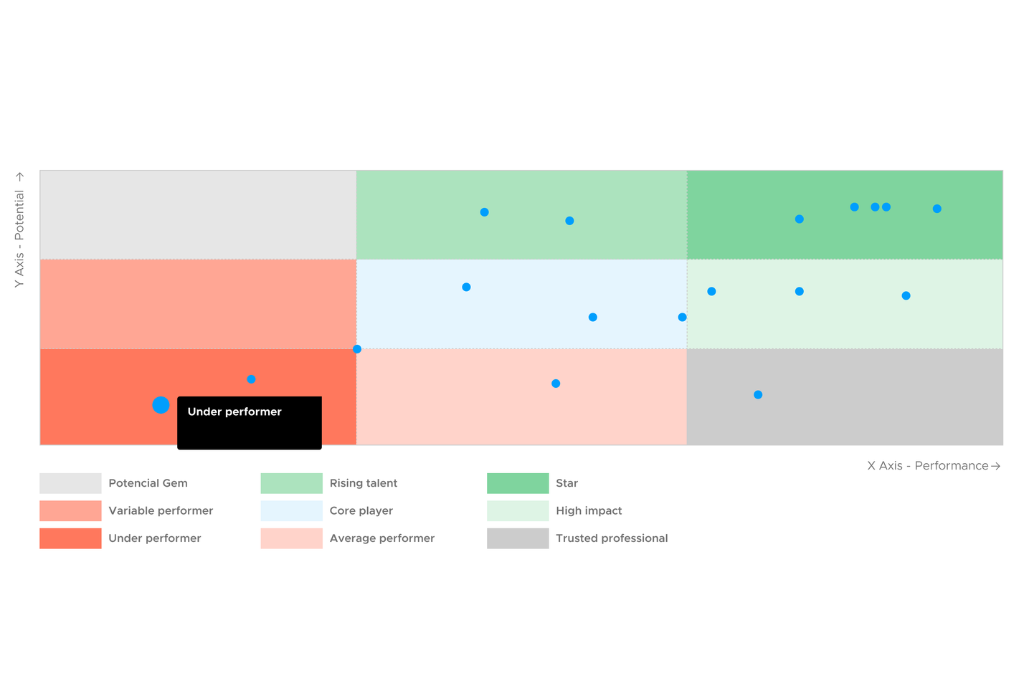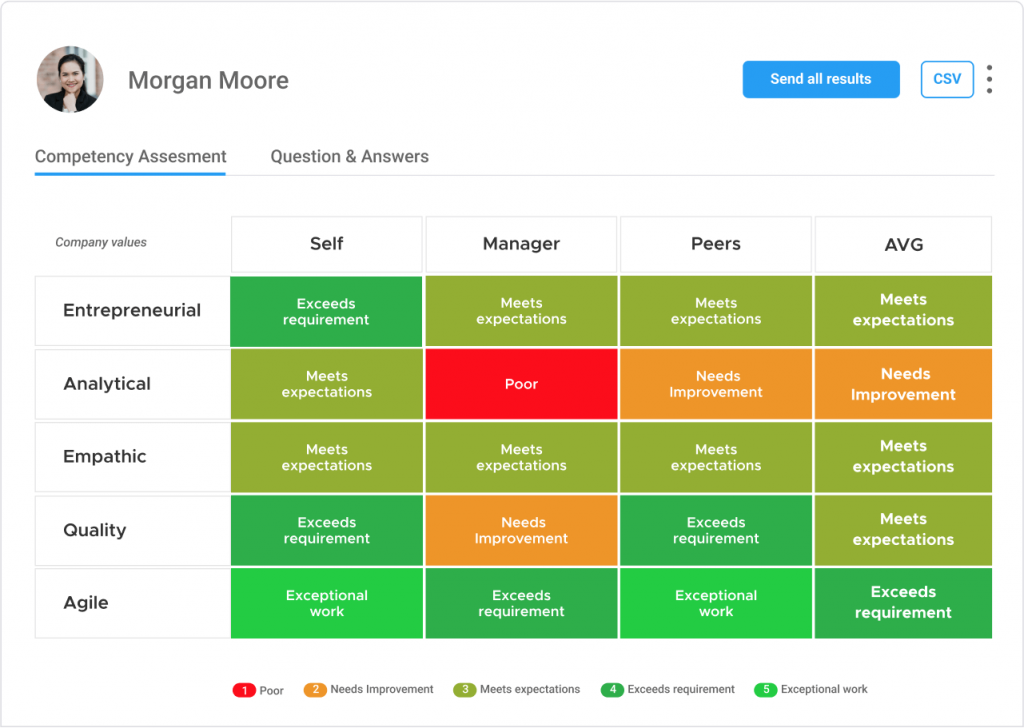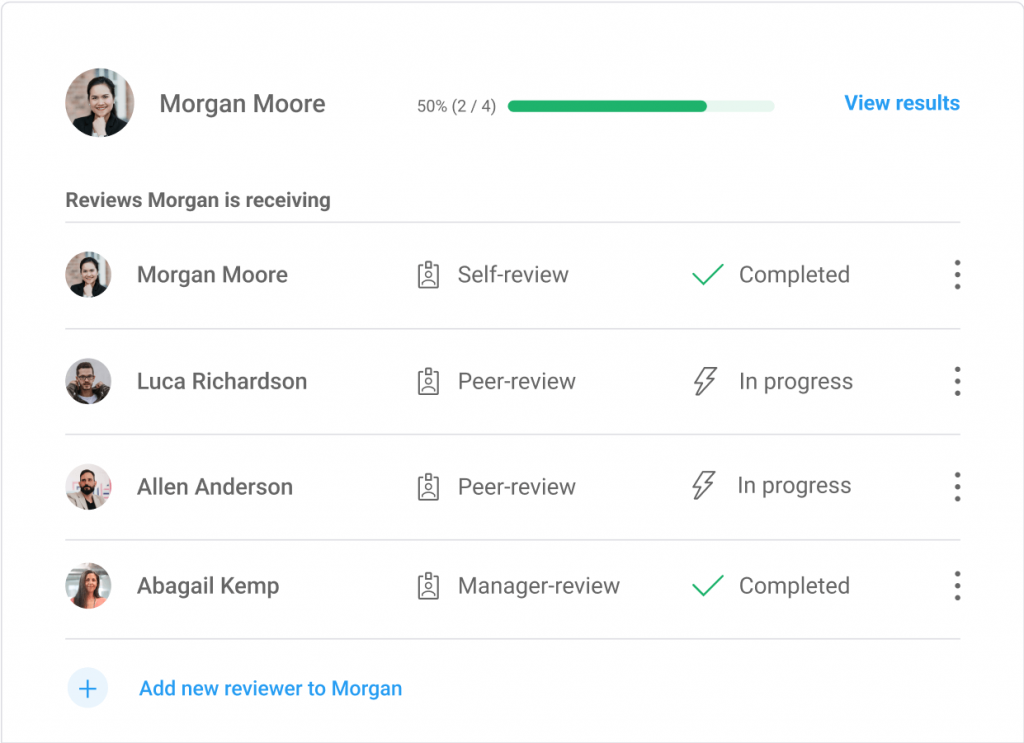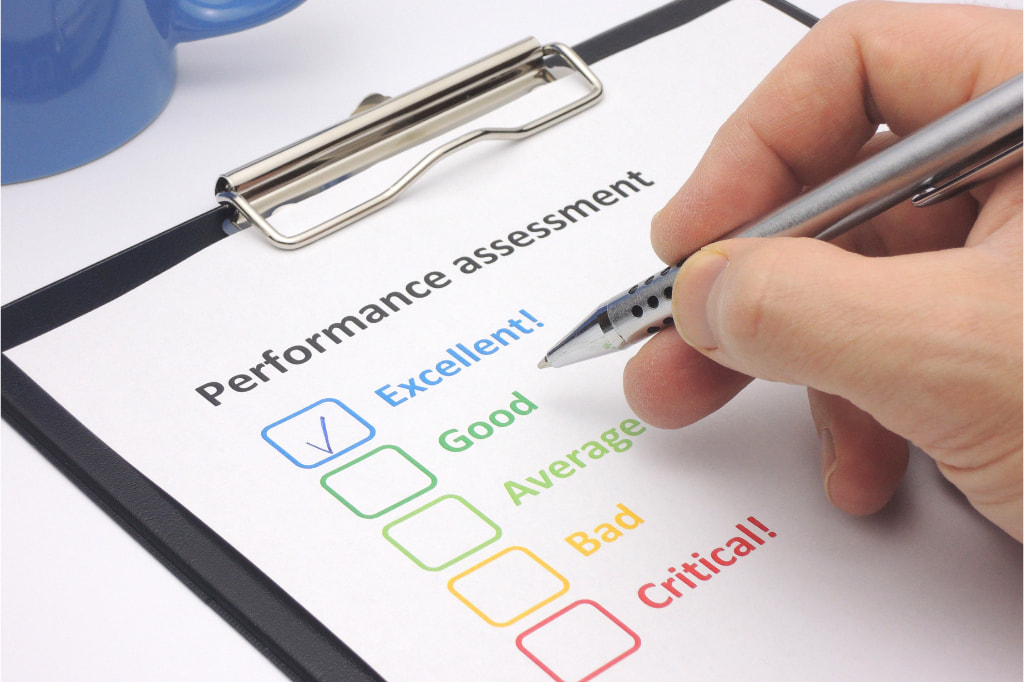Measuring and analyzing employee performance is an essential process for the proper management of internal talent in any company. It also has a direct impact on business goals! To do this in the best possible way, there are 14 types of performance reviews that can be combined and easily adapted to the needs of your company.
In an increasingly dynamic, diverse and competitive world, a company’s ability to effectively evaluate the performance of its employees can make a 180-degree turnaround in the company’s growth. Therefore, we must not overlook the great importance of educating employees in the feedback culture. The more ingrained it is, the more actionable the results of the reviews will be.
Types of performance reviews for each occasion
It is very common for HR teams to carry out performance reviews, but did you know that there is no single type of performance reviews? Are you aware that there are several factors that will lead you to do them one way or another?
The different types of performance reviews that exist are designed to help organizations measure and evaluate the performance of their employees in a systematic and objective way. These types vary from who does and receives the review to the period we define to launch them and the objective we pursue with the performance review.
Each performance evaluation method has its own characteristics, advantages and limitations. This makes the choice of one or the other, and the combination of one with the other, highly important. Relevant not only to ensure a fair performance review, but also because it can lead to dissatisfaction and demotivation among employees. This, undoubtedly, can negatively affect your turnover rate and workplace climate.
As you can see, choosing the right combination of types of performance reviews is much more important than it may seem. Therefore, below, we will discuss the arguments that will help you understand the 14 types that exist and how they are best suited to the particularities of your company:
- Self assessment performance review
- Peer performance review
- Manager-report or 90 degree performance review
- 180 degree performance review
- 270 degree performance review
- 360 degree performance review
- Competency-based performance review
- Objectives-based performance review
- Values-based performance review
- Year end performance review
- 6 month performance review
- Quarterly performance review
- Monthly performance review
- 90 day performance reviews
Understanding these types and knowing how to combine and apply them appropriately to each situation is a must for HR professionals, leaders and companies that want to maximize the potential of their teams.

6 Types of performance reviews according to who is doing the review
Perhaps the most common way to choose one or the other type of performance reviews is to consider the person or people who will participate in the review. The perspective and interests of the person doing the review can significantly influence the results and, therefore, the performance review process.
You will see how the choice of reviewer can affect the perceived fairness, objectivity and effectiveness of the performance review. Plus how to achieve a more strategic and effective approach to talent management and team development.
- Self assessment performance review
- Peer performance review
- Manager-report or 90 degree performance review
- 180 degree performance review
- 270 degree performance review
- 360 degree performance review
Self assessment performance review
In self-assessment performance reviews, employees evaluate their own performance, job competencies and/or values. It is the perfect opportunity for them to reflect on their own work, set goals and take the time to generate a subjective view of their performance.
Advantages:
The self-assessment type allows employees to take responsibility for their own development. It is based on self-reflection and self-knowledge; an ideal time to stop and reflect on something you normally don’t have time for, “how am I doing?“.
It is also an ideal opportunity to foster open communication between employees and managers by comparing self-assessments with other reviews that have been carried out by their managers at some point in time.
Limitations:
People tend to be harder on themselves than on others, and when it comes to performance reviews, this can be a problem. Employees can be overly self-critical or indulgent, which may bias the review. This means that there is a lack of objectivity in the self-assessment, making it difficult to compare with other types of reviews.
Final goal:
The main goal of self-assessments is to enhance employees’ self-reflection and commitment to their own professional development. It is also a welcome method of facilitating open and constructive communication between managers and employees.
Peer performance review
In peer performance reviews, an employee’s co-workers evaluate their performance based on how they perceive it. It is a type of performance review based primarily on shared experiences in the work environment.
The ideal is to include colleagues with whom they work on a daily basis and colleagues from other teams. It is important for the correct development of this type of performance review that there is a relationship between them in which no one is in charge over anyone else.
Advantages:
It’s a great way to get multiple perspectives on an employee’s performance from peers who are generally not positioned above or below the employee.
This type of performance review fosters collaboration and teamwork by encouraging employees to take the time and interact with each other to provide constructive feedback to their peers.
Limitations:
It could be the case that conflicts or rivalries between peers may arise or already exist that negatively affect the results of the reviews. Similarly, there is a risk that colleagues whose relationship is very good may try to “support” each other by exaggerating their colleague’s virtues in the review. It could also be that some employees do not feel comfortable evaluating their peers.
For these reasons, when conducting a peer performance review, it is very important that, whenever possible, at least 4 to 5 people evaluate each employee.
Final goal:
Peer performance reviews seek to obtain a more complete, objective and balanced view of an employee’s performance. This type of review promotes collaboration, communication and the pursuit of professional growth of the team.
Manager performance review
In the review between managers and reports, also known as 90-degree performance review, the employee’s direct supervisor evaluates the employee’s performance based on the employee’s objectives, competencies and previously defined goals. The employee does the same with their manager.
Advantages:
The manager is the person who can best evaluate an employee, since they have a close view of their performance, contribution to the team and relationship with the rest of the colleagues. It is important to highlight to the manager the importance of this type of performance review within a more global review process. In this way, we will promote the manager’s awareness of the effort they must put into their answers, providing guidance and motivational and actionable feedback.
Limitations:
This type of performance review is often perceived as too hierarchical and generates doubts about its true value. Also, let’s keep in mind that in this case the review depends to a large extent on the quality of the relationship between the manager and the employee.
Final goal:
The manager performance review seeks to measure job performance, align objectives with the organization’s strategy and provide feedback focused on the employee’s growth and development from the person who is most in tune with their contribution to the company, the manager.
180 Degree performance review
A 180 degree performance review is a combination of manager and peer review. It provides a more global view of an employee’s performance by involving the two fundamental pillars of their life in the company: their manager and their peers.
Advantages:
It is a good option to complete the results of a performance review without having to involve too many people. With feedback from the manager and peers, it is possible to extract insights that allow the employee to obtain complete information about their performance in the team.
Limitations:
Even though it is considered a good option, we must keep in mind that it does not provide a complete picture of performance. This type of performance review would leave out the comments of other parties involved in the employee’s day-to-day life.
In addition, focusing the review only on the people who work with the employee on a day-to-day basis could generate biases due to the relationship that exists between them.
Final goal:
The 180 degree performance review seeks to evaluate the employee’s work relationship and interaction with the rest of the team. Likewise, it seeks to obtain information on the level of contribution of the person to the work and objectives of the team.
270 Degree performance review
The 270 degree performance review is the most common type in organizations. It involves the members of a 180 degree, the manager and peers, along with the employee’s direct reports. If direct reports are not available, it is often recommended to involve people from other teams to complement the view of the employee’s performance.
Advantages:
It provides a more complete view of performance than previous reviews, allowing results to be obtained with a greater level of detail.
Limitations:
It can certainly be more complex and time-consuming than any of the other types of performance reviews discussed above. Also, they can be overwhelming for employees.
Final goal:
The main objective of the 270 degree performance review is to measure work performance by adding another view to the process, that of the employee’s direct reports or, failing that, colleagues from other teams.
360 Degree performance review
The 360 degree performance review is one of the most comprehensive types of performance reviews available. The 360 degree performance review seeks to gather feedback on an employee from multiple sources. These sources include managers, peers, reports, customers and/or suppliers and the employee themself. In this way, it provides a comprehensive view of performance and competencies.
It is also true that it is very common for companies to talk about 360 performance reviews when customers and suppliers are not really involved. This step is often a barrier.
Advantages:
Provides a complete and balanced picture of an employee’s performance by considering different perspectives. Encourages continuous improvement by identifying areas for development. Promotes communication and collaboration.
Limitations:
A 360 performance review requires a lot of time and more resources than any other type of performance review. It generates many dependencies since there are several people that we will have to involve in order to obtain the expected results.
In addition, they could be perceived as invasive by employees because they are so time-consuming. Keep in mind that, when 360 performance reviews are launched, it is common for a single person to have to respond to several reviews from different people. In this sense, making mistakes in giving feedback is more likely. Also, it is possible that they will switch off as they complete reviews, resulting in feedback that is not as constructive as it could be.
Final goal:
The main goal of the 360 degree performance review is to provide a comprehensive performance evaluation, facilitate personal and professional development, and promote individual growth.
> Masterclass (Spanish): How to design, launch and manage a 360 performance review with Nailted
3 Types of performance reviews according to the purpose of measurement
Have you considered what you want to measure with your performance review? One of the fundamental dimensions when defining the type of performance review to be carried out lies in the purpose of measurement. What are the objectives of our performance review?
Keep in mind that, depending on the perspective taken for the design of this review, different results can be obtained that influence decision making, the definition of objectives and talent management in general.
In this section, we explore three types of performance reviews classified according to the purpose of measurement. Each method has a specific purpose and context in which it may be most appropriate. Understanding these distinctions is essential to conducting an effective, results-oriented performance review.
- Competency-based performance review
- Objectives-based performance review
- Values-based performance review
Competency-based performance review
Competency-based performance reviews aim to evaluate and measure the specific skills, knowledge and behaviors that are essential for success in a specific job. It assesses an employee’s fit with their job based on a predefined set of competencies relevant to that job.
Advantages:
Facilitates alignment between employees’ skills, their job position and business goals. It allows the identification of areas for improvement and the design of fully customized career development plans for each employee. By focusing on predefined competencies, the feedback that those involved have to provide will be much more intuitive and, therefore, will generate more valuable comments.
Limitations:
It requires a clear and updated definition of the relevant competencies for each position. In addition to careful drafting of the review questions and scales chosen to measure these competencies. Can be a more complex process to implement as it requires as objective and clear an approach as possible.
Final goal:
As mentioned above, the ultimate goal of competency-based performance review is to evaluate the ability of employees to apply the specific skills and knowledge required for their job and contribute to the success of the organization.
Most organizations that conduct this type of performance review seek to collect results in a way that allows them to place all employees in the competency matrix. This graphical representation allows companies to identify areas for improvement based on defined competencies where further development is needed.
The competency-based performance review coupled with the 9-box grid is a valuable tool for making strategic decisions in terms of talent development, promotions and salary reviews.

> Webinar (Spanish): Talent development as a key part of your people strategy
Objectives-based performance review
This type of performance review focuses on the evolution towards the achievement of the goals and objectives predefined for the employee by the manager and/or the organization.
Advantages:
It provides a clear and objective way to measure performance based on the achievement of objectives. Allows to align the work of each employee with the business objectives. Encourages accountability and motivation by the feeling of evolution in the achievement of objectives.
Limitations:
Can become too focused on short-term results, neglecting other equally important aspects of performance. Can be difficult to apply in roles where results are more complex to quantify. If realistic goals are not set, it can be stressful for the employee.
Prior coordination between employees and their managers is very important for the definition of these objectives, otherwise the development of the evaluation would be meaningless.
Final goal:
The main purpose of the objectives-based performance review is to evaluate the performance of employees based on the achievement of previously defined goals and objectives, thus promoting strategic alignment and compliance with business objectives.
Values-based performance review
The values-based performance review focuses on measuring how employees embrace and live the company’s values and culture. It evaluates the consistency between employee behavior and the values shared by the organization.
Advantages:
Helps maintain and promote a healthy organizational culture. Identifies cultural problems, gaps in understanding of values, communication failures and ethical issues. Promotes a work environment based on shared values.
Limitations:
The values-based performance review can be very subjective. Each person interprets values differently, making them difficult to measure objectively.
Final goal:
The main objective of the values-based performance review is to evaluate how employees live and support the company’s culture and values. It seeks to contribute to maintaining a coherent and healthy organizational culture. As in competency-based performance reviews, it is common to make use of values matrices.

5 Types of performance reviews by time period
The third of the fundamental aspects to take into account in any performance review process is the period of time during which the review is carried out. The timing of the review can significantly influence the perception of performance and the effectiveness of the development strategies that follow.
Understanding what time period you need to collect to meet the objectives of your performance review is key. Keep in mind that you won’t get as specific results as you could in a monthly performance review, but it may limit you to get a clearer evolution over time, for example.
- Year end performance review
- 6 month performance review
- Quarterly performance review
- Monthly performance review
- 90 day performance reviews
Year end performance review
This type of performance review is the most common. Companies usually start preparing their performance review processes in November, in order to be able to launch the reviews for the end of the year. The idea is to evaluate the employee’s competencies, objectives and/or values during the previous year.
Advantages:
It provides a very broad view of how the year has turned out as a summary of long-term performance. It allows setting and reviewing long-term objectives, appreciating their evolution. It tends to be one of the most efficient in terms of participation, as it is not considered an excessive frequency that can generate rejection among employees.
Limitations:
Because of its wide periodicity, it may be considered infrequent and disconnected from the day-to-day reality of the organization. Some problems may go unnoticed for long periods. The feedback received tends to act more as a retrospective and to be more general, not so actionable.
Final goal:
The main goal of this type of performance review is to make decisions in terms of compensation, promotion and development. It seeks to lay the foundations for the development of the employees for the coming year and to serve as a form for the evaluation and definition of objectives.
6 month performance review
The 6 month performance review is conducted twice a year. It allows for a more regular review of performance and progress.
Advantages:
Provides more frequent evaluations than the year end one, allowing for slightly more immediate feedback. Facilitates correction of problems over time.
Limitations:
Requires more time and resources than year end review. Frequency can overburden employees if not properly managed. In terms of effort-reward there is a disparity of opinions. It is commonly said that 6 month performance reviews do not allow more leeway than annual reviews and involve duplication of effort.
Final goal:
The main goal of the 6 month performance review is to provide a more regular and detailed evaluation of performance, facilitating continuous improvement and mid-term decision making.

Quarterly performance review
The quarterly performance review is carried out every three months, allowing for even more frequent review. Together with the annual one, it is usually the most common due to its practicality linked to business development; most companies review their objectives on an annual and quarterly basis.
Advantages:
It provides very regular feedback, which facilitates rapid correction of problems and adaptation to changes in the work environment. As it coincides with, in most cases, the review of objectives, it is an ideal opportunity to adjust them based on recent insights that are relevant in the short term.
Limitations:
It may require a significant time commitment from employees. Always keep in mind that designing performance reviews takes time, but so does responding. We should try to patronize employees and realistically assess whether quarterly performance reviews are a feasible move for the organization. There is no doubt that increasing the frequency can generate a very large additional workload.
Final goal:
The main goal of the quarterly performance review is to provide frequent and timely evaluations that promote continuous improvement and enable agile adaptation to changing business needs. In addition to achieving alignment with the quarterly objective review.
Monthly performance review
As its name indicates, the periodicity of this type of review is monthly. Quite a bit tighter than the rest of the types of performance reviews.
Advantages:
It provides room for extremely regular feedback. This facilitates the immediate detection of problems and their early resolution, which in the long run could prevent major problems.
Limitations:
It can be quite intense in terms of time and resources required. For some employees it could even be overkill or overwhelming if not properly managed and the rationale for such a frequent frequency of reviews is not clearly stated. It is not a sustainable move in the long term.
Final goal:
The main goal of the monthly performance review is to provide constant and detailed feedback that encourages continuous improvement, agile adaptation and the achievement of short-term goals. However, it is not usually a highly recommended type of performance review. For frequent feedback from employees, satisfaction surveys are best.
90 day performance reviews
The 90 day performance review is an integrated process that takes place about three months after a new employee has joined the company. This type of performance review has a clear focus on the adaptation of the new employee to their role, team and company culture. It also provides the employee with early feedback, allowing for the detection of initial challenges, such as cultural adjustment problems or more specific development needs.
It is important to note that 90 day performance reviews do not exclude any other type of review. It should be supplemented with longer-term reviews for more complete performance management.
Advantages:
Conducting a 90 day performance review accelerates the new employee’s adjustment process by providing early feedback and support. At the same time, it promotes retention by addressing adjustment issues in a timely manner, increasing the likelihood that the employee will feel valued and engaged.
In addition, it facilitates the identification of development needs in time, allowing the planning of actions to improve performance in the medium and long term. It also helps to strengthen the relationship between the new employee and their manager and colleagues, fostering open and effective communication.
Limitations:
This is a short-term approach that does not provide a complete picture of long-term performance. It can create additional workload for the manager, especially if done in conjunction with other appraisal processes.
Final goal:
The main goal of the 90 day performance review is to ensure that your new employees integrate effectively, adapt to the company culture and achieve success in their new roles. At the same time, it seeks to identify development opportunities and provide constructive feedback to new hires.
Talent management is continually evolving, and with it, the way we evaluate the performance of our teams. The 14 types of performance reviews we have explored offer a wide range of approaches that you can combine to find the type of review that best suits your needs.

Remember that performance reviews are an opportunity to drive growth, development and excellence in your teams, both individually and organizationally. Explore these types, adapt your approach and cultivate a work environment where growth and success are the norm!
At Nailted we help you create your performance review process from the design of the review itself, its launch and calibration, to the delivery of results and the follow-up of OKRs. A process tailored to People teams, with advanced configurations, that allows you to automate every step while retaining full control over your feedback campaigns. Do you want to discover more?










